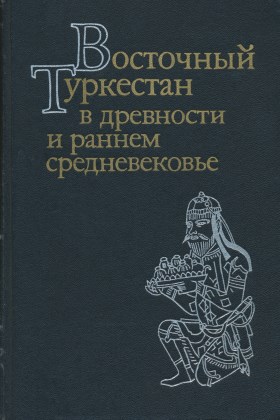 [ коллективная монография ]
[ коллективная монография ]
Восточный Туркестан в древности и раннем средневековье.
Очерки истории.
// М.: ГРВЛ. 1988. 456 с.
[ аннотация: ]
В монографии впервые в исторической литературе на основе комплексного анализа письменных и археологических данных осуществлена реконструкция истории Восточного Туркестана с древнейших времён до X в. н.э. Подробно прослежена история изучения Восточного Туркестана русскими и зарубежными экспедициями. Дан очерк этнической и политической истории региона в конце I тысячелетия до н.э. и в I тысячелетии н.э.
Содержание
Глава 1. История изучения. — 17
Глава 2. Каменный век. — 83
Глава 3. Бронзовый век. — 136
Глава 4. Ранний железный век. — 156
Глава 5. Восточный Туркестан в свете античных источников. — 190
Глава 6. Восточный Туркестан в III в. до н.э. — VI в. н.э. — 223
Глава 7. История Восточного Туркестана в VII-X вв. — 297
Глава 8. Великий шёлковый путь. — 352
Список использованных источников и литературы. — 392
Список сокращений. — 429
Указатель имён. — 431
Указатель географических названий. — 439
Summary. ^
Eastern Turkestan: Essay of Ancient and Early Medieval History. The monograph is a comprehensive study of the ethnic, socio-political and cultural history of this Central Asian region that played a remarkable role in the ancient and Medieval history of Eurasia. For many millennia it maintained close ties with Central Asia, actually making a single ethno-cultural whole with it. The authors synthesize data of numerous sources which largely differ both in origin and chronologically to recreate an integral picture of the East Turkestan history, its ethnic and cultural links.
The Introduction gives a definition of Eastern Turkestan, specifies its boundaries and the key goals of research. The authors argue against the invalid attempts to show Eastern Turkestan as a part of ancient and medieval Chinese empires.
Chapter 1 summarizes data about expeditions to Eastern Turkestan and the materials they retrieved. Related studies and publications are analysed. The authors stress the important role of Russian travellers in the study of the region. Detailed information is given about major national and foreign studies of the region’s culture. Much space is reserved for an elaborate analysis of the academic publications of written sources and studies.
Chapters 2, 3 and 4 deal with the early history of the region now known to us mostly through archaeological data. Data about all known monuments of region’s Stone Age are collected together and brought into a system. Many monuments are described and dated for the first time. The earliest ties between Eastern Turkestan and India, Central Asia and Mongolia are examined. Monuments of the Bronze Age indicate to the ties with the steppe bronze cultures of the tribes known for the painted ceramics, in particular from Central Asia. The late 2 and early 1 millenia A.D. may be regarded as the epoch of the expansion in the region of the Iranian tribes whose early Medieval written monuments have been found there. In the early Iron Age Eastern Turkestan was integrated in the area of the Sakas — the Iranian people of the Scythian type culture.
Chapter 5 offers a detailed analysis of ancient sources relating to the region. On this basis we may only approximately establish the location of peoples and places but even so it is very important for reconstructing the ethno-cultural image of ancient Eastern Turkestan. The data essentially supplement and correct information of the Chinese sources.
Chapters 6 and 7 are concerned with the region’s political history in the 2nd-6th centuries (Chapter 6) and the 7th-10th centuries (Chapter 7).
The struggle between the Kushan Kingdom, Hiung-nu, Han Empire, etc., for control in the region is described. The authors analyse the administrative and economic systems and the historical developments in the states of the region. The final chapter summarizes data of the Chinese and ancient Graeco-Roman sources, data on archaeology and numismatics relating to the Great Silk Road. Domestic and external trade and economic relations of the local states are analysed in detail.
|